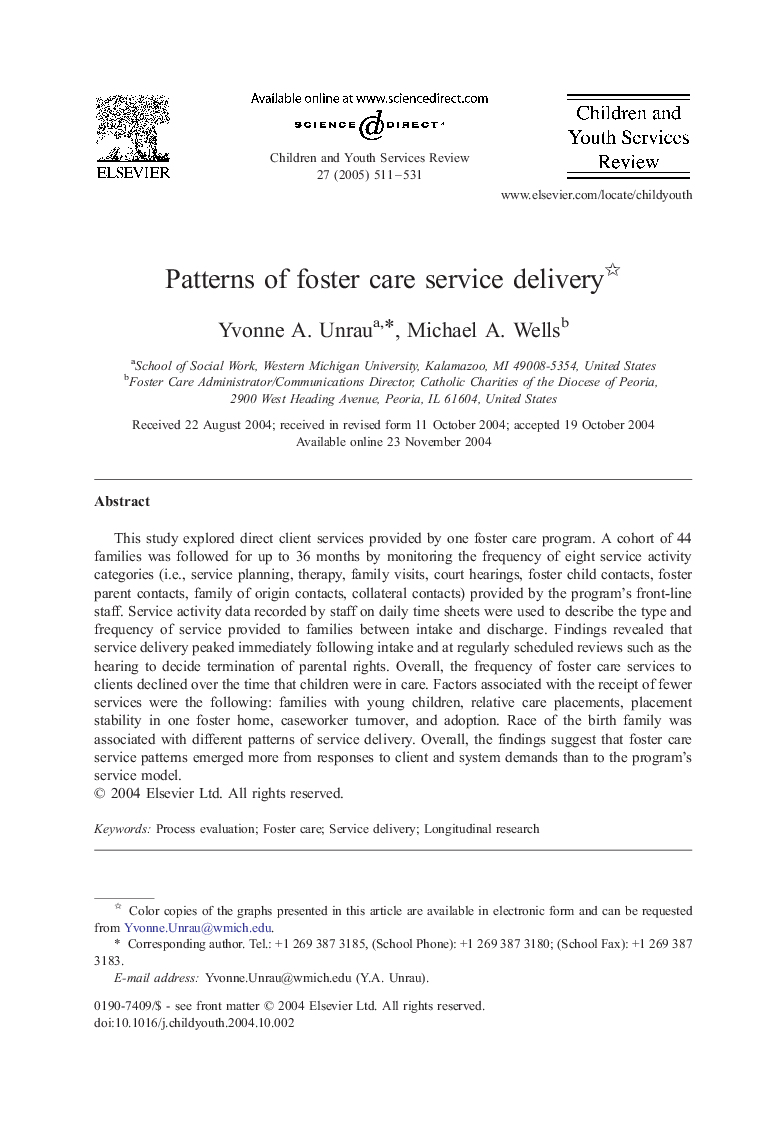| Article ID | Journal | Published Year | Pages | File Type |
|---|---|---|---|---|
| 10312002 | Children and Youth Services Review | 2005 | 21 Pages |
Abstract
This study explored direct client services provided by one foster care program. A cohort of 44 families was followed for up to 36 months by monitoring the frequency of eight service activity categories (i.e., service planning, therapy, family visits, court hearings, foster child contacts, foster parent contacts, family of origin contacts, collateral contacts) provided by the program's front-line staff. Service activity data recorded by staff on daily time sheets were used to describe the type and frequency of service provided to families between intake and discharge. Findings revealed that service delivery peaked immediately following intake and at regularly scheduled reviews such as the hearing to decide termination of parental rights. Overall, the frequency of foster care services to clients declined over the time that children were in care. Factors associated with the receipt of fewer services were the following: families with young children, relative care placements, placement stability in one foster home, caseworker turnover, and adoption. Race of the birth family was associated with different patterns of service delivery. Overall, the findings suggest that foster care service patterns emerged more from responses to client and system demands than to the program's service model.
Related Topics
Health Sciences
Medicine and Dentistry
Perinatology, Pediatrics and Child Health
Authors
Yvonne A. Unrau, Michael A. Wells,
